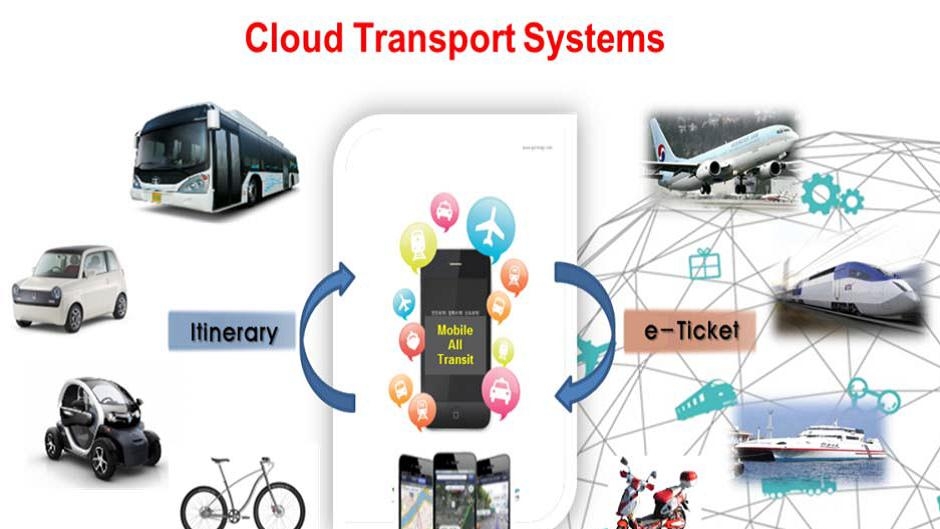Technology Play in Transportation

Technology plays a crucial role in transportation, transforming how people and goods move from one place to another. Here are some key ways technology impacts transportation:
Navigation and Mapping: Technology provides navigation and mapping solutions through GPS systems, digital maps, and navigation apps. These tools enable travelers to plan routes, receive real-time traffic updates, and navigate efficiently, reducing travel times and congestion on roadways.
Smart Transportation Systems: Technology facilitates the development of smart transportation systems that optimize traffic flow, enhance safety, and reduce environmental impact. Intelligent transportation systems (ITS) use sensors, cameras, and data analytics to manage traffic signals, monitor road conditions, and coordinate transportation networks, improving overall transportation efficiency.
Public Transportation: Technology enhances public transportation systems through innovations such as real-time transit tracking, contactless fare payment, and on-demand ride-sharing services. Public transit agencies leverage mobile apps, smart cards, and digital signage to improve passenger experience, increase ridership, and optimize service routes.
Connected Vehicles: Technology enables connectivity between vehicles, infrastructure, and transportation networks, creating opportunities for safer and more efficient transportation systems. Connected vehicle technologies such as vehicle-to-vehicle (V2V) communication, vehicle-to-infrastructure (V2I) communication, and cooperative intelligent transportation systems (C-ITS) improve road safety, reduce accidents, and enable automated driving functions.
Autonomous Vehicles: Technology advances autonomous vehicle technology, including self-driving cars, trucks, and buses, have the potential to revolutionize transportation by eliminating the need for human drivers. Autonomous vehicles use sensors, cameras, radar, and AI algorithms to navigate roads, detect obstacles, and make driving decisions, offering potential benefits such as improved safety, reduced congestion, and increased mobility for individuals with disabilities or limited mobility.
Electric Vehicles (EVs): Technology promotes the adoption of electric vehicles (EVs) as a sustainable alternative to traditional gasoline-powered vehicles. EV technology includes battery electric vehicles (BEVs), plug-in hybrid electric vehicles (PHEVs), and hydrogen fuel cell vehicles, which offer lower emissions, reduced dependence on fossil fuels, and potential cost savings for consumers and businesses.
Ride-Sharing and Mobility-as-a-Service (MaaS): Technology enables the rise of ride-sharing platforms and mobility-as-a-service (MaaS) solutions that offer convenient and flexible transportation options. Ride-sharing apps connect passengers with drivers for on-demand transportation services, while MaaS platforms integrate various transportation modes (e.g., public transit, ride-sharing, bike-sharing) into a single digital platform, enabling seamless multimodal travel experiences.
Drone Delivery and Cargo Transportation: Technology facilitates the use of drones for delivery and cargo transportation in various industries such as logistics, e-commerce, and healthcare. Drone delivery services offer fast and efficient delivery of goods, especially in remote or hard-to-reach areas, while reducing transportation costs and carbon emissions associated with traditional delivery methods.
Hyperloop and High-Speed Rail: Technology enables the development of high-speed transportation systems such as hyperloop and high-speed rail networks. Hyperloop technology uses vacuum tubes and magnetic levitation to transport passengers and cargo at ultra-high speeds, potentially revolutionizing long-distance travel and reducing travel times between cities.
Environmental Monitoring and Sustainability: Technology supports environmental monitoring and sustainability efforts in transportation through emissions monitoring, fuel efficiency tracking, and sustainable transportation planning. Green transportation initiatives promote the adoption of low-emission vehicles, alternative fuels, and eco-friendly transportation modes to reduce environmental impact and mitigate climate change.
Overall, technology plays a transformative role in transportation, driving innovation, improving efficiency, enhancing safety, and shaping the future of mobility. Embracing technological advancements and digital solutions is essential for building sustainable, inclusive, and resilient transportation systems that meet the evolving needs of society.
Thank you,